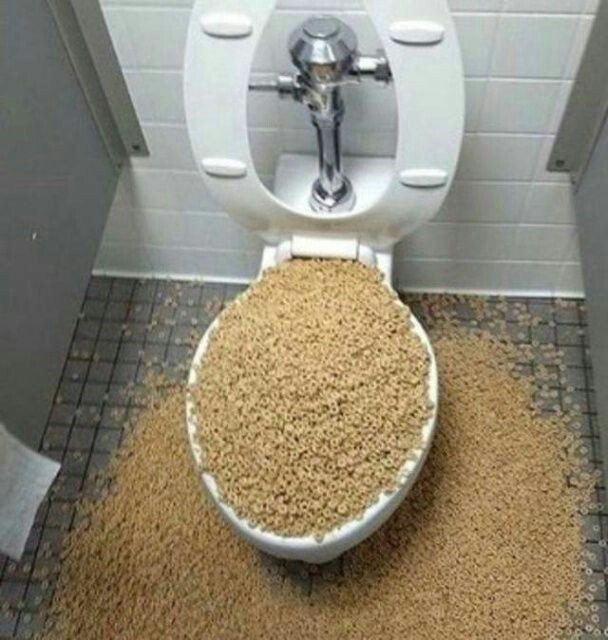This great article down below about Think Twice Before Flushing Food Down Your Toilet is totally compelling. Have a go and draw your own final thoughts.

Intro
Many individuals are typically faced with the problem of what to do with food waste, particularly when it pertains to leftovers or scraps. One typical concern that develops is whether it's alright to flush food down the commode. In this post, we'll delve into the reasons why individuals might take into consideration flushing food, the effects of doing so, and alternate approaches for appropriate disposal.
Reasons that individuals could think about purging food
Absence of understanding
Some people might not know the possible damage brought on by flushing food down the toilet. They might wrongly think that it's a safe technique.
Convenience
Flushing food down the toilet might appear like a quick and very easy remedy to getting rid of undesirable scraps, particularly when there's no nearby trash bin available.
Negligence
Sometimes, people might merely pick to flush food out of sheer negligence, without taking into consideration the consequences of their activities.
Consequences of flushing food down the commode
Environmental influence
Food waste that ends up in waterways can contribute to contamination and injury aquatic environments. Furthermore, the water utilized to purge food can stress water sources.
Pipes problems
Flushing food can bring about blocked pipes and drains pipes, causing expensive pipes fixings and inconveniences.
Types of food that need to not be purged
Fibrous foods
Foods with fibrous textures such as celery or corn husks can get entangled in pipelines and cause blockages.
Starchy foods
Starchy foods like pasta and rice can take in water and swell, resulting in clogs in pipelines.
Oils and fats
Greasy foods like bacon or food preparation oils ought to never ever be flushed down the toilet as they can strengthen and create obstructions.
Proper disposal methods for food waste
Utilizing a waste disposal unit
For homes equipped with waste disposal unit, food scraps can be ground up and flushed with the pipes system. Nonetheless, not all foods appropriate for disposal in this way.
Recycling
Particular food packaging materials can be recycled, minimizing waste and lessening ecological effect.
Composting
Composting is an environmentally friendly means to take care of food waste. Organic products can be composted and utilized to improve soil for horticulture.
The relevance of proper waste administration
Minimizing ecological injury
Correct waste management methods, such as composting and recycling, assistance reduce contamination and preserve natural deposits for future generations.
Safeguarding plumbing systems
By preventing the method of flushing food down the bathroom, house owners can prevent pricey plumbing repair services and preserve the integrity of their plumbing systems.
Final thought
Finally, while it may be appealing to flush food down the commode for benefit, it is essential to comprehend the prospective effects of this action. By adopting proper waste monitoring methods and taking care of food waste responsibly, individuals can add to much healthier pipes systems and a cleaner setting for all.
FLUSH FOOD DOWN THE TOILET?
FLUSHING FOOD CAN CAUSE BLOCKED DRAINS IN YOUR HOME
All of the plumbing fixtures in your home are connected to the same sewer pipe outside of your home. This outdoor sewer pipe is responsible for transporting all the wastewater from your home to the Council sewer mains. Even small pieces of food that go down the kitchen sink can cause problems for your sewer. It should therefore be obvious that flushing larger bits of food, such as meat, risks a clog in either the toilet itself or the sewer pipes. Flushing greasy food is even more problematic because oil coagulates when it cools, coating the interior lining of your pipes.
THE TOILET IS NOT A BIN
Food isn’t the only thing that people shouldn’t be flushing down the toilet. People use the toilet to dispose of all kinds of things such as tampons, makeup wipes, dental floss, kitty litter and even underwear. Water goes to great lengths to educate residents about the high costs and stress placed on wastewater treatment systems simply from people flushing the wrong stuff down the toilet. It costs taxpayers millions of dollars each year, and homeowners thousands in blocked drain repairs.
FLUSHING FOOD IS A WASTE OF WATER
Flushing food is a waste of our most precious resource - water. In June this year Level 1 water restrictions were introduced to protect water supply from drought conditions. Much of New South Wales continues to be affected by prolonged drought with recent figures revealing up to 97 per cent of the state remains in drought. Depending on whether you have a single or dual flush toilet, every single flush uses between five and 11 litres of water. In the current climate this is a huge amount of water to be wasting on flushing food that should be placed in the bin (or better yet, the compost).
https://www.jabplumbingsolutions.com.au/blog/can-you-flush-food-down-the-toilet

I was shown that article on Is it safe to flush food (especially rice) down the toilet? from a good friend on our other web blog. For those who appreciated our blog post kindly don't forget to share it. Bless you for being here. Kindly stop by our site back soon.
Book-Now